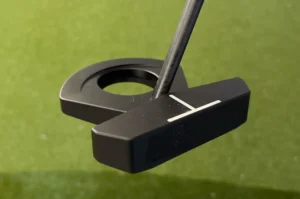Every golfer dreams of shooting lower scores. But between the long drives, crisp iron shots, and silky smooth putting strokes required to go low, it can seem like an impossible task.
The good news? You don’t need to completely overhaul your game to shave strokes off your scores. With some smart strategy adjustments and work on the right skills, those elusive birdies and pars are within your reach.
This article will provide how to get better at golf covering driving, iron play, short game, putting, course management, practice, equipment, and fitness to help you shoot lower scores now. Master these techniques to improve your all-around game and lower your handicap.
How to get better at golf
1. Optimizing Driver Launch Conditions
Your driver is the biggest weapon in your arsenal, but are you really maximizing distance and control off the tee? For most golfers, optimizing launch conditions is the fastest way to pick up yards.
You want to launch the ball at the right angle given your swing speed, with an ideal backspin rate to maximize carry distance. Use a launch monitor to dial in your optimum launch and spin numbers. As a general guide:
- Slow swing speed (<90 mph): 12-15 degree launch angle, 2,500-3,000 rpm spin rate
- Moderate swing speed (90-105 mph): 13-16 degree launch angle, 2,800-3,200 rpm spin rate
- Fast swing speed (>105 mph): 14-17 degree launch angle, 3,000-3,500 rpm spin rate
Generating centripetal force through proper loading and weight shifting is key to maximizing clubhead speed and achieving your optimum launch conditions.
2. Vary Putting Speed for Improved Distance Control
Frustrated with constantly coming up short or long on the greens? Struggling with distance control when putting is incredibly common and want to how to get better at golf, But you can sink more putts by making a simple adjustment.
Vary your putt speed based on the slope you’re putting on to account for gravity. Putt firmly up a slope to get the ball to the hole. On downhill putts, take some power off to avoid blowing past.
This will take practice to master given most people’s tendency to hit putts at one speed. But learning to finely tune speed and read greens will pay off big on knee-knocking short putts.
3. Know Your Shot Dispersion Patterns
Even when you flush a drive or iron shot, it rarely goes perfectly straight. All golfers have some amount of natural shot dispersion – a general spread area where your shots end up around the target.
Do you tend to miss right or left? Short or long? Understanding your own dispersion patterns is key for smart course management.
For example, if you mostly miss short and left, you should aim further right of trouble off the tee to avoid it. Always play the percentages based on your personal shot tendencies.
4. Practice Swing Variance
Many golfers get stuck in a rut practicing the exact same repetitive swing. But variance is essential both in practice and on the course.
Actively work swing variance into range sessions. Shift ball positions by a few inches, adjust alignment, try different grip pressures, etc.
Introducing variance makes your swing more adjustable and enhances your ability to control ball flight and shot shape. You’ll strike the ball more crisply and boost creativity around the greens too.
5. Flare Feet Out to Open Hips
From bump and runs to green side flops, quickly rotating your hips through impact is vital for executing any kind of short game shot.
A simple foot adjustment can facilitate better hip turn and body motion to pull off these short swings.
Flaring your feet out slightly opens your hips naturally and creates room to rotate. This allows you to freely whip the clubhead through the ball.
Your feet should point roughly 30 degrees outward. From this open stance, focus on turning back and through smoothly.
6. Avoid Doubles Trouble
Nothing derails a round faster than doubles and big numbers. And doubles often arise from poor strategy, not bad shots.
Following a simple rule can help avoid those morale-crushing doubles and eliminate big numbers.
When facing any challenging situation – like hazards, tough pins, or tricky lies – make your primary goal avoiding a double bogey.
Play conservatively when you need to. Lay up short of water, aim away from sucker pins, chip out sideways from trouble, etc. Stay patient and take your medicine.
Eliminating doubles will do wonders for your scores.
7. Randomize Your Practice
Ever head to the range, beat balls with your irons for an hour, then putt for 20 minutes? That’s a typical practice routine for many golfers. But mixing up your practice pays major dividends.
Improving requires activating different parts of the brain. Randomizing practice introduces cognitive diversity to avoid staleness.
So structure range sessions differently each time. Go from driver, to putting, to bunker play, back to irons, then short game. Or choose clubs randomly.
Random practice improves focus, adapts the brain, and prepares you to handle anything on the course.
8. Master Alignment
Even great golf swings produce poor shots when aimed incorrectly. Mastering proper alignment is incredibly overlooked, but it’s crucial for consistency.
Use intermediate targets like trees or bunkers to pick your starting line initially. Then dial it in to your final target.
Check alignments from behind the ball at address to see your target line. Use reference lines on the ball itself as well.
Reinforce proper alignment and aim with tools like training mirrors, alignment rods, foot spray, or even toothpicks.
With precise alignment, you’ll hit fewer wayward shots.
9. Manage Expectations and Emotions
Golf can be an emotional rollercoaster. Bad shots lead to frustration, negativity, and trying too hard. Managing expectations and controlling emotions is key for scoring.
Have a reasonable game plan and define success realistically. If you miss a three-foot putt, don’t beat yourself up – it happens to the pros too.
When facing a challenging shot, take some deep breaths to lower your heart rate and relax mentally. Staying composed under pressure leads to better execution.
With measured expectations and controlled emotions, you can play to your ability more consistently and you can even play golf at home.
Final Thoughts
The road to lower scores is right in front of you. Applying these 10 game-changing tips will sharpen your all-around skills and golf IQ. Optimizing your driver, honing your short game finesse, smart course management, effective practice, and a level head will lead to dropping strokes in no time.
Now it’s time to take action. Try implementing several tips during your next range session and round. Repeat and reinforce them until they become second nature. With some effort and patience, you’ll be reaching new personal bests and reveling in those elusive birdies. Your golf goals are achievable if you commit to incremental improvement.
Let me know in the comments which tips help you shoot your best scores ever! Golf is a journey, but with the right techniques, your destination can be going low and realizing your potential.








